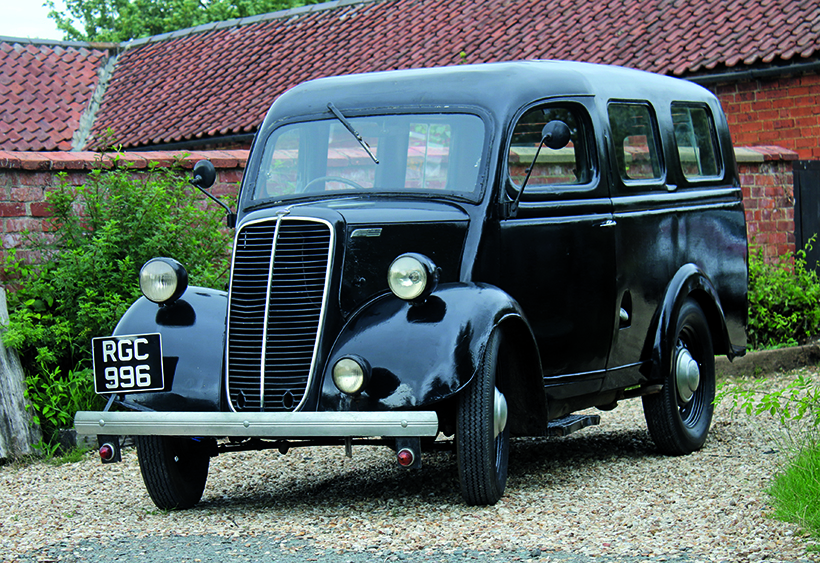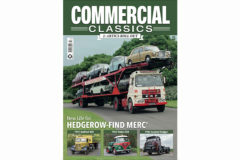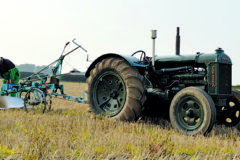Tatty but loveable Thames Utilicon
Posted by Chris Graham on 15th November 2020
This tatty but loveable Thames Utilicon is still hiding its secret past – and has enjoyed the most unlikely film role, as Nick Larkin reports.
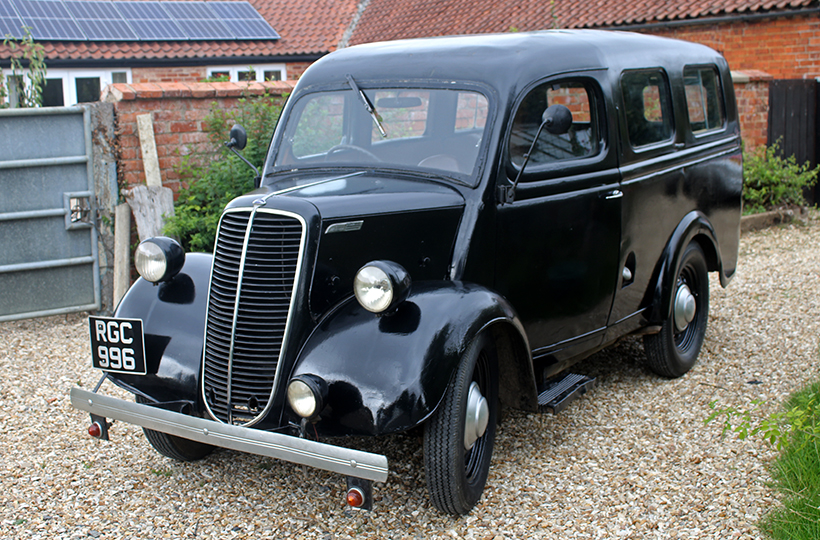
This tatty but loveable, 1956 Ford Utilicon oozes character and friendly appeal.
This tatty but loveable 1956 Thames E83 Utilicon would never be a show prize-winner. The paintwork doesn’t gleam, there’s general unevenness on the panels and even, shock horror, visible brush strokes in the paint! Be all this as it may, place RGC 996 at a show and any automotive exotica would be ignored as people clamour over this old Thames. This vehicle has obviously been used; it’s seen things and it’s lived. The vehicle is a crafty old thing, however, still hiding an important part of its history, and confused two owners – 40 years apart – by revealing just a little!
What we know
This Thames E83 left Ford’s Dagenham plant in 1956, in Utilicon (estate car) form. Originally marketed as a Fordson, the 10cwt E83 model was built from 1938 to 1957 as a cheap, rugged, reliable and simple vehicle. It was available in various forms, from van to chassis cowl, ready to take bodywork for anything from an ice cream van to a fire engine.
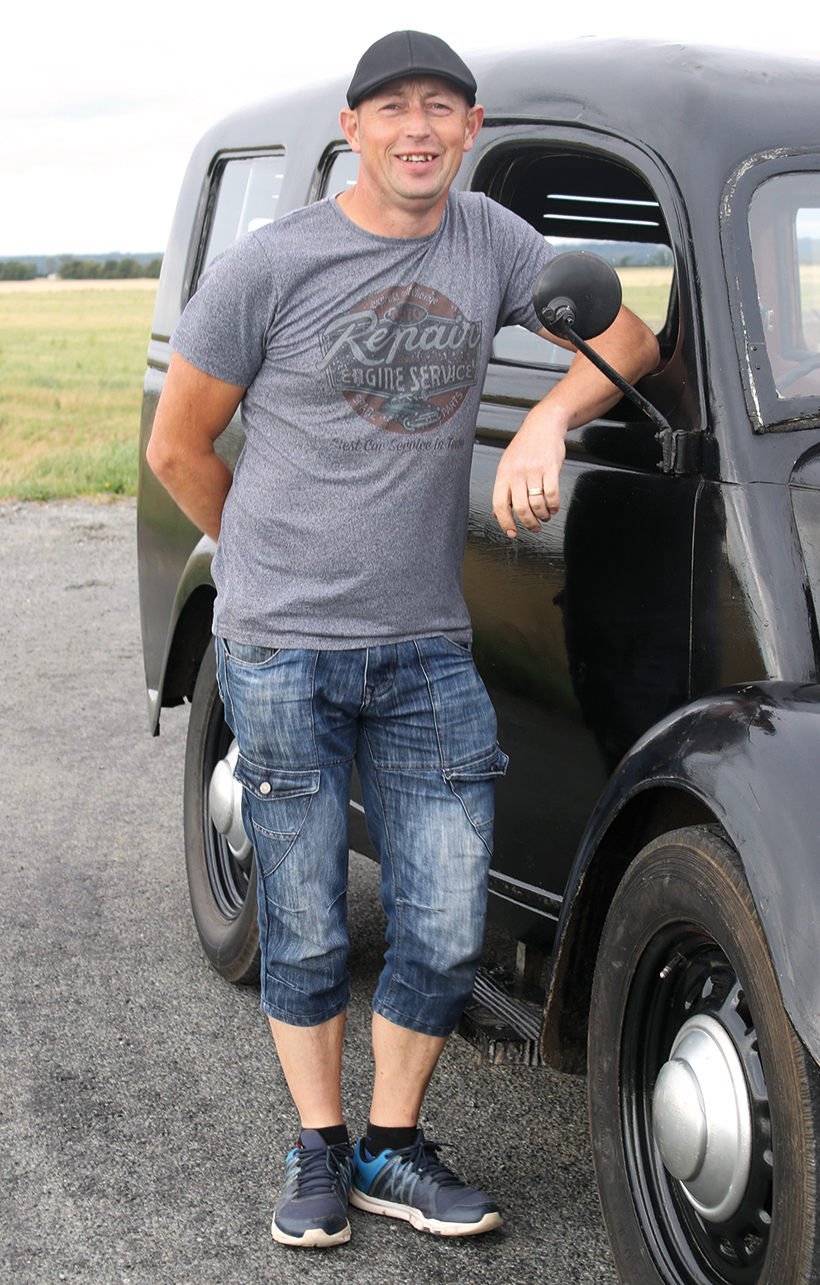
Owner, Simon Fixter
For 30 years and beyond, these vehicles, powered by Ford’s 1,172cc side-valve engines and three-speed gearboxes, were seen practically everywhere. They were the backbone of many small businesses and large utility fleets, and their rear view a regular sight and source of anguish for press-on motorists stuck behind one lumbering along at around 40mph, at best.
Apparently, RGC 996 spent many years plodding around Derby, carrying tins of distemper and mohair brushes, in service with a local painter and decorator. He advertised the vehicle for sale in the Exchange & Mart around 1976, as a ‘Ford pug-nosed van’., and the buyer was classic vehicle enthusiast, Glyn Bowen. “I remember going to see it in Derby. The seller was apologetic, saying he’d forgotten to mention in the ad that the ‘van’ had windows cut into it, so he’d knock a bit off the price for that. He didn’t know it was a Utilicon! I remember paying £109 for it – for some reason!”
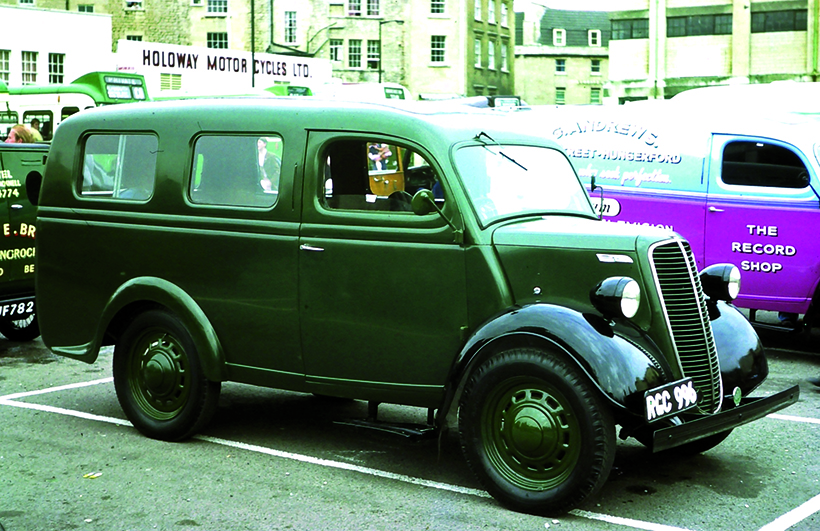
The Thames at a rally, probably in 1979.
The Thames revealed one surprise. It was full of decorating equipment and had a carpet. “I’m not sure if the owner knew that, underneath all that, there were fold-down seats giving a completely flat floor!” Indeed, this load capacity would shame many a modern people-carrier! Glyn recalls driving the vehicle home. “It drove well but, when I tried to reach a reasonable speed, the side bonnet side flaps rose like wings. Also, when it started to rain, I soon realised the limitations of the single, vacuum-operated windscreen wiper!”
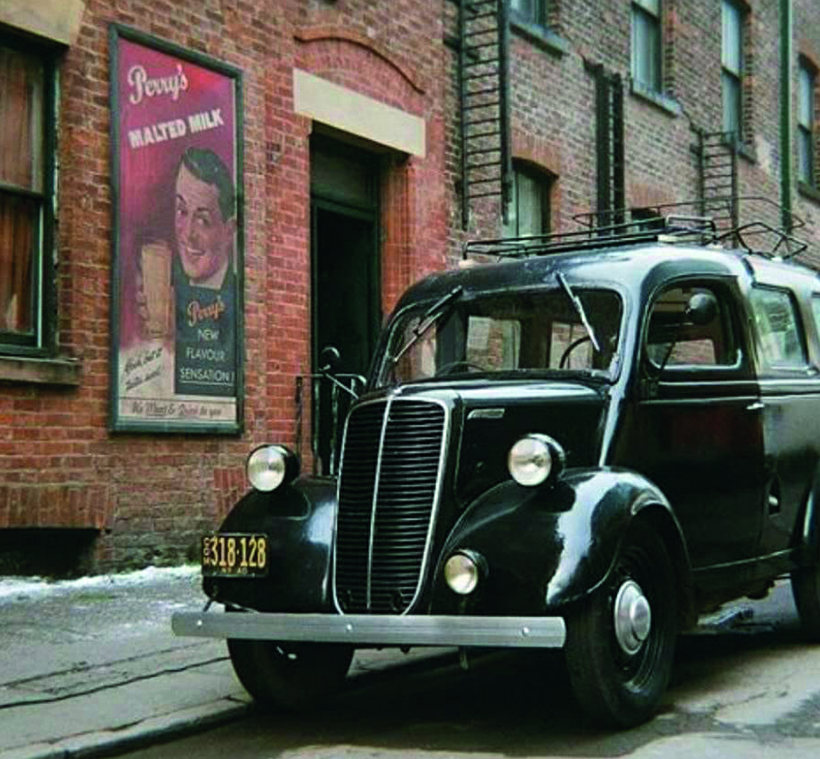
Yes, this really is the Thames, as seen in the film Das Boot! (Pic: Simon Fixter)
Glyn did some mechanical and body work on the Thames, and it was then that the vehicle revealed a secret, Removing old paint from the rear nearside wing revealed the legend: ‘PROPERTY OF THE HOME OFFICE.’ “I was intrigued, but never managed to find out more,” said Glyn, who recalls entering the Thames in an early 1980s Historic Commercial Vehicle Society-organised Bournemouth to Bath Run. He sold the vehicle around 1983 to a fellow HCVS member who, sadly, died shortly afterwards.
“I then heard that the Thames had been bought by someone who was going to ‘hot rod’ it,” recalled Glyn. After that he heard nothing more, until the era of Facebook arrived.
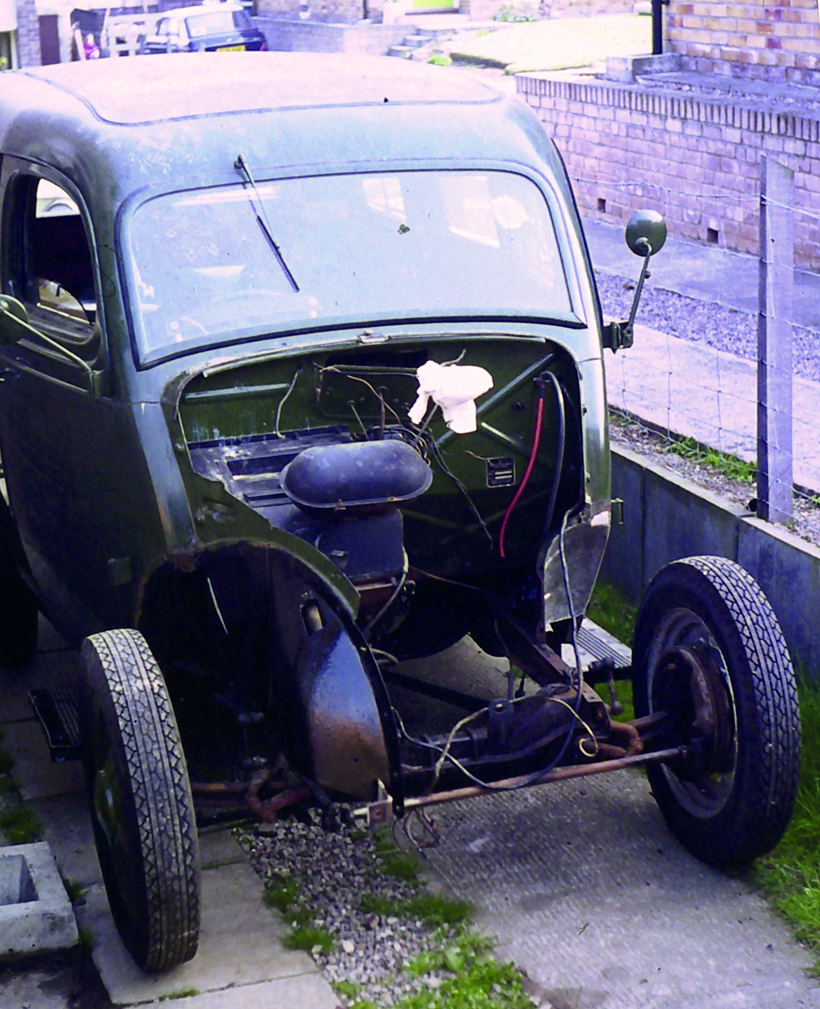
Glyn Bowen, who owned the Thames during the 1970s, carried out a lot of mechanical work.
Millennium developments
Now let’s bring the story forward to 2008, when John Wilson – a Lincolnshire classic vehicle collector and enthusiast – noticed a sorry-looking Ford Utilcon being advertised on eBay. It was RGC 996, which had fallen on hard times. John and his great friend Simon Fixter, of Fixter Automotive, set about restoring the vehicle. “It really was bad when John got it, absolutely derelict,” recalled Simon. “In fact, the body was so bad that John was originally going to take the back off and turn it into a pick-up. We spent ages sourcing parts from all over the country; John was retired and he went and got them.”
There was also no engine – a replacement coming from Scotland, along with replacement rear panels. A correct-spec gearbox came from Wales, and the engine was rebuilt by Simon. Major work was also carried out on the rear framework, inner panels and brakes.
John was keen to make the Thames as usable as possible, so put an aluminium panel rather than canvas on the roof, fitted halogen headlamps and put sailcloth on the seats. It was also lovingly, hand-painted in black. Finally, the vehicle was ready for the road, and John used it regularly until his death in 2017. “John absolutely loved this vehicle, and I look on it as a tribute to him,” said Simon, who ended up buying the Thames from John’s family. Since then, he’s put new ash framing in the driver’s door and repaired a rear door.
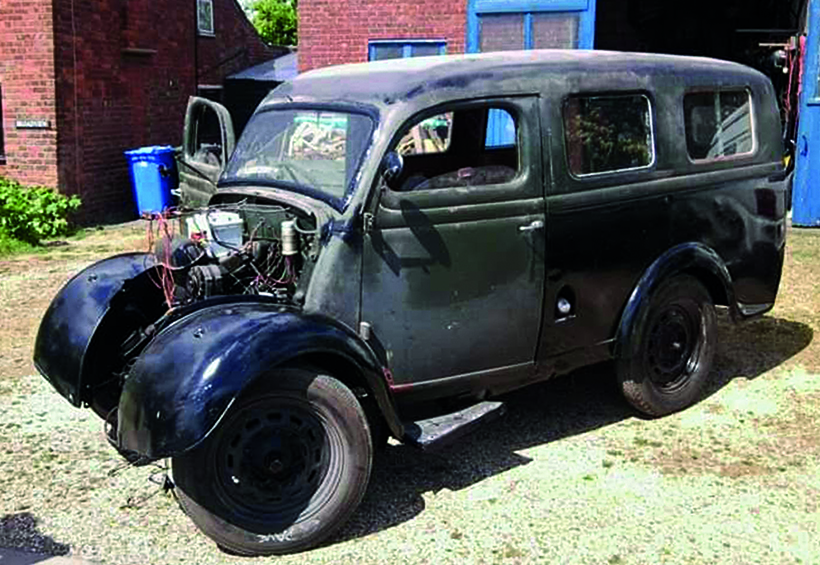
Much work was needed to return the Thames to the road. (Pic: Simon Fixter)
Thames on the road
Simon grew up with old vehicles. His dad, Tony, was a well-known collector of vintage cars, as well as a bus driver and a drawing-on-wood (pyrogaphy) artist. “The first car I ever drove was a 1933 Austin Seven Box saloon; it was also the first car I ever owned. The first car I bought was a Ford Anglia estate, which I bought off a garage forecourt in Ruskington, when I was 10. I paid a tenner for it!”
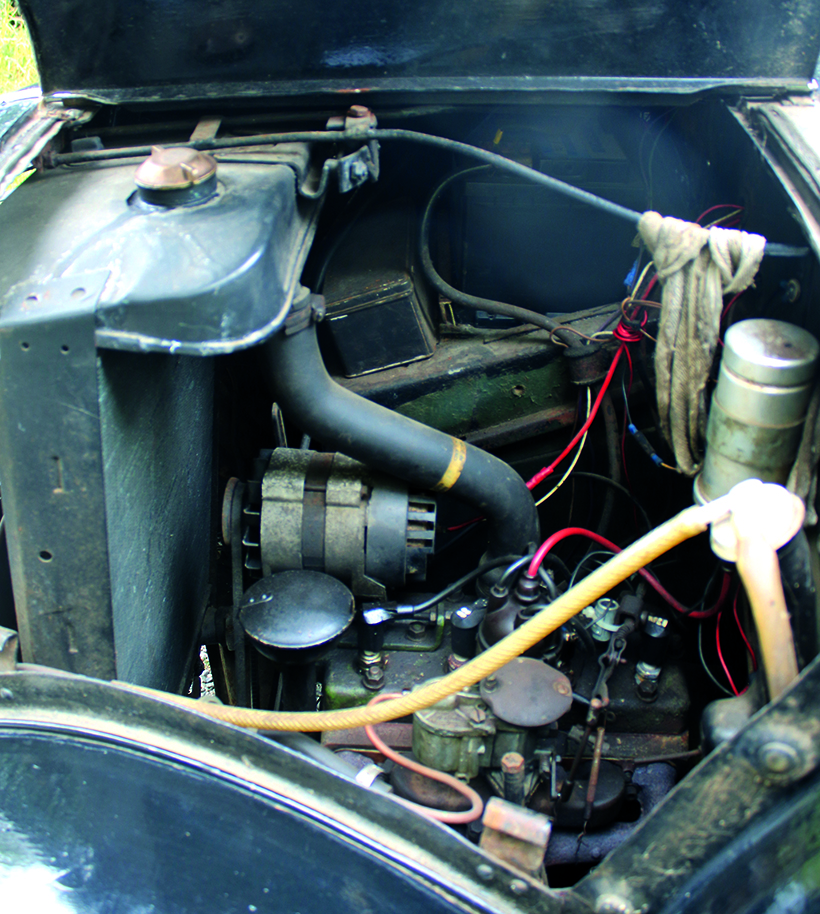
Replacement 10hp Ford engine sourced and rebuilt.
He has run Fixter Automotive for 30 years, repairing and restoring cars. Thus, dealing with Thames’ rod brakes was no problem for Simon; a comforting thought as I accepted an invitation take the wheel. I’d already enjoyed a couple of miles as a passenger, sampling several seats and savouring the cavernous surroundings, the loud note of the engine and assorted draughts. The permanently open vents in the rear doors, and lack of heater, must have been a delight for drivers.

Much work needed to return Thames to the road. (Pic: Simon Fixter)
Just about anything that could move – including the passengers – seemed to have been shaking to a ghostly twist. The actual ride quality of the vehicle was better than you’d expect, maybe due to the relatively long wheelbase. Sitting on the rather small driver’s seat, I was faced with a large, angled steering wheel and a spindly gear lever that seemed to be eyeing me ominously. There are no confusing instruments on the dash, just speed, temperature and fuel gauges.

Side seat has original covering.
Into first, where you’d normally expect to find second, and we were off. There’s a feeling that you’re travelling at 80 rather than 39mph, but the gear ratios are well spaced, with a particularly flexible second. Steering is a little on the wandery side – the Thames finding things to interest it on both sides of the road! Joking aside, it’s better than you might predict, and keeping your foot on the throttle seems to cure most ills. And yes, those rod brakes do their bit.
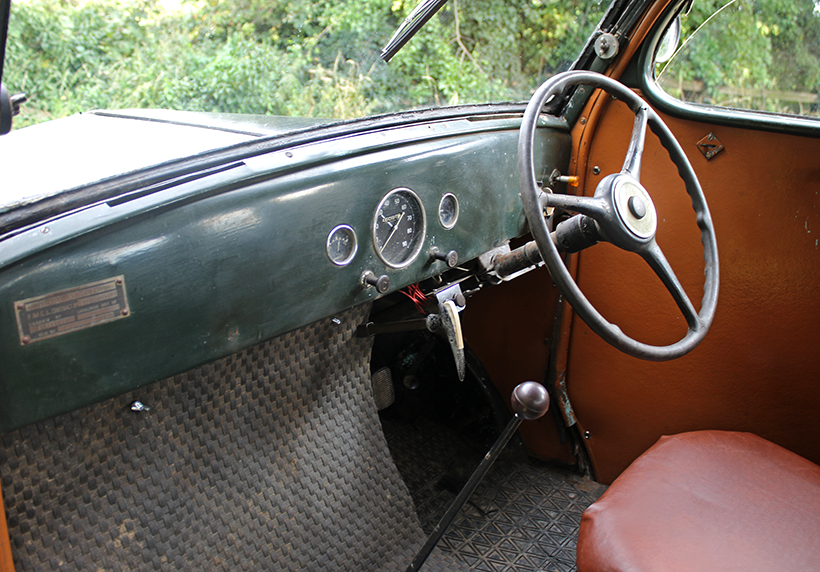
The interior isn’t heavy on those little luxuries!
And the latest
Could there be a more characterful vehicle? A film company didn’t think so and hired the Thames for – wait for this – Das Boot (The Boat). Some of the seat coverings were replaced for this, but the centre one remains original.
Simon has done a lot of work hiring out vehicles for films and TV, not least the latest version of All Creatures Great and Small. The purple ‘Bible bus’ on Emmerdale came from him, and he’s even sourced machinery for The Fast and the Furious.
But Das Boot? “It was strange. A dummy steering wheel was fitted to the Thames to make it look left hand drive in the location of wartime New York,” Simon revealed. “We were in fact in Manchester!”
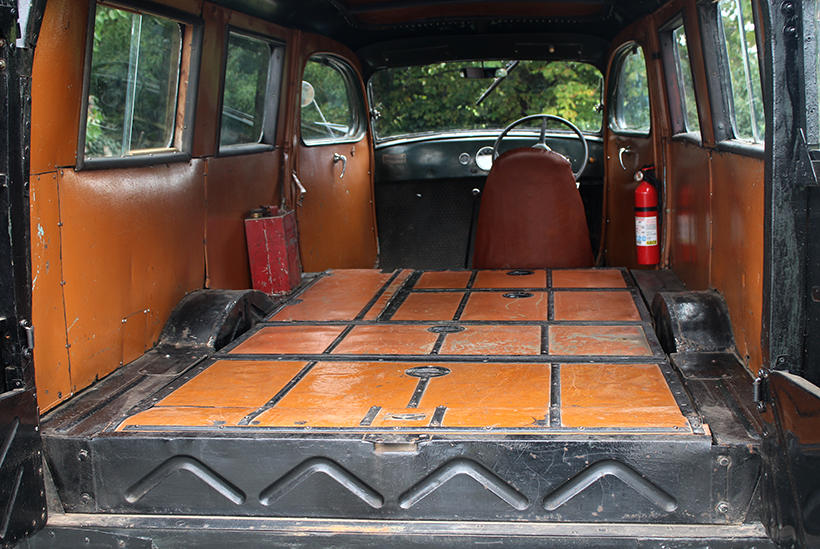
Seats fold down to create flat floor shaming many a modern people carrier.
Another surprise. Simon, like 1970s and early ‘80s owner Glyn, was fascinated to find out more about the vehicle’s history. “We thought it might be ex-RAF, but that wouldn’t explain the green paint that was visible. I put something on Facebook and Glyn got in touch. He was delighted to hear the Thames had survived, and suggested I look for the Home Office lettering on the side panel. “It had been replaced but, luckily, I’d kept the original and took the paint off,” Simon revealed.
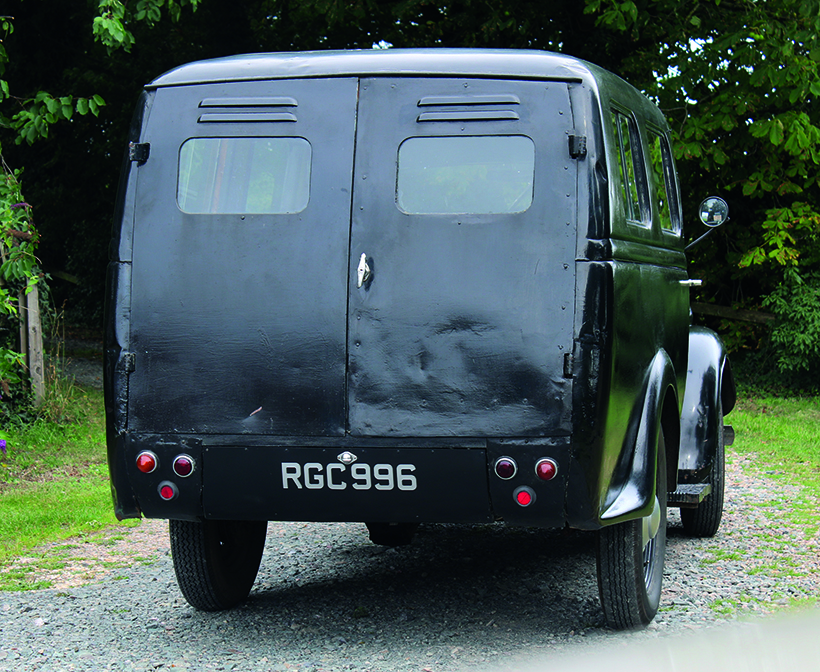
Vehicle definitely looks much older than it is!
This doesn’t explain the actual use for the Utilcon. “We think it might be civil defence but, nobody knows for sure. Simon – and Glyn – would love to know the answer. If you can help fill in any gaps in the Thames’s history, or would like to know more about the services of Fixter Automotive, contact Simon via email to: fixter581@live.uk.
For a money-saving subscription to Classic & Vintage Commercials, simply click here
